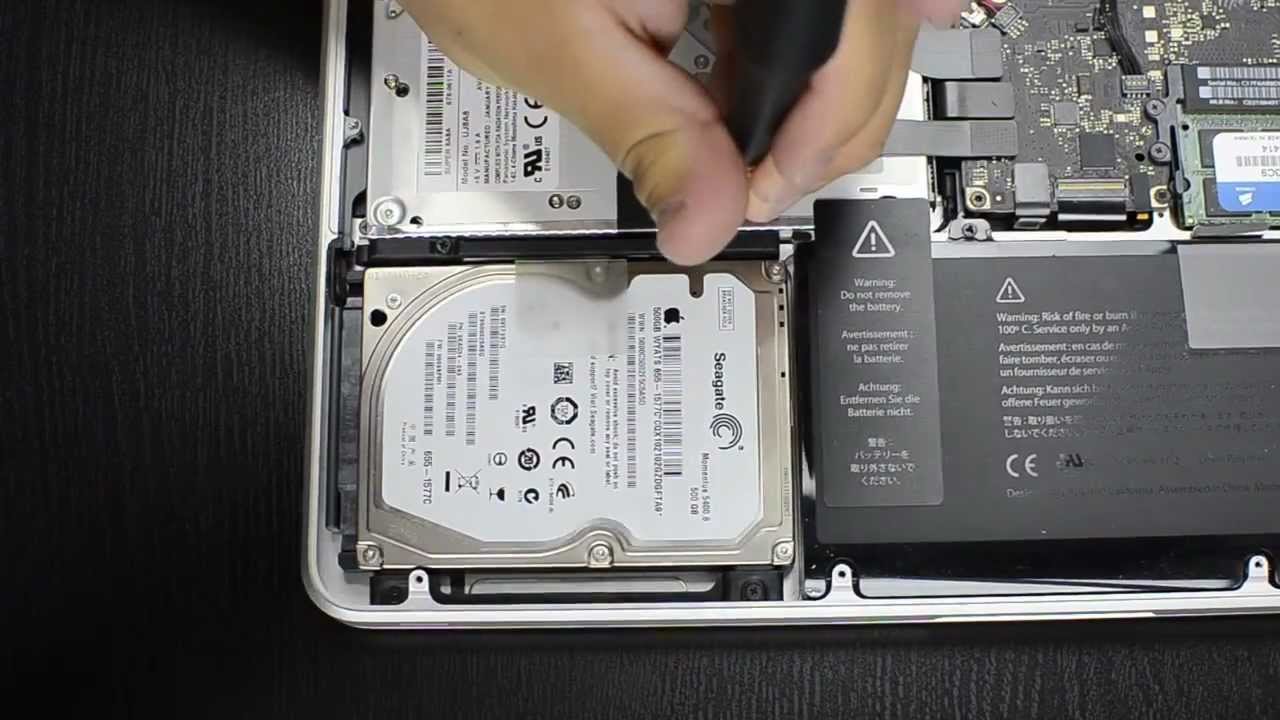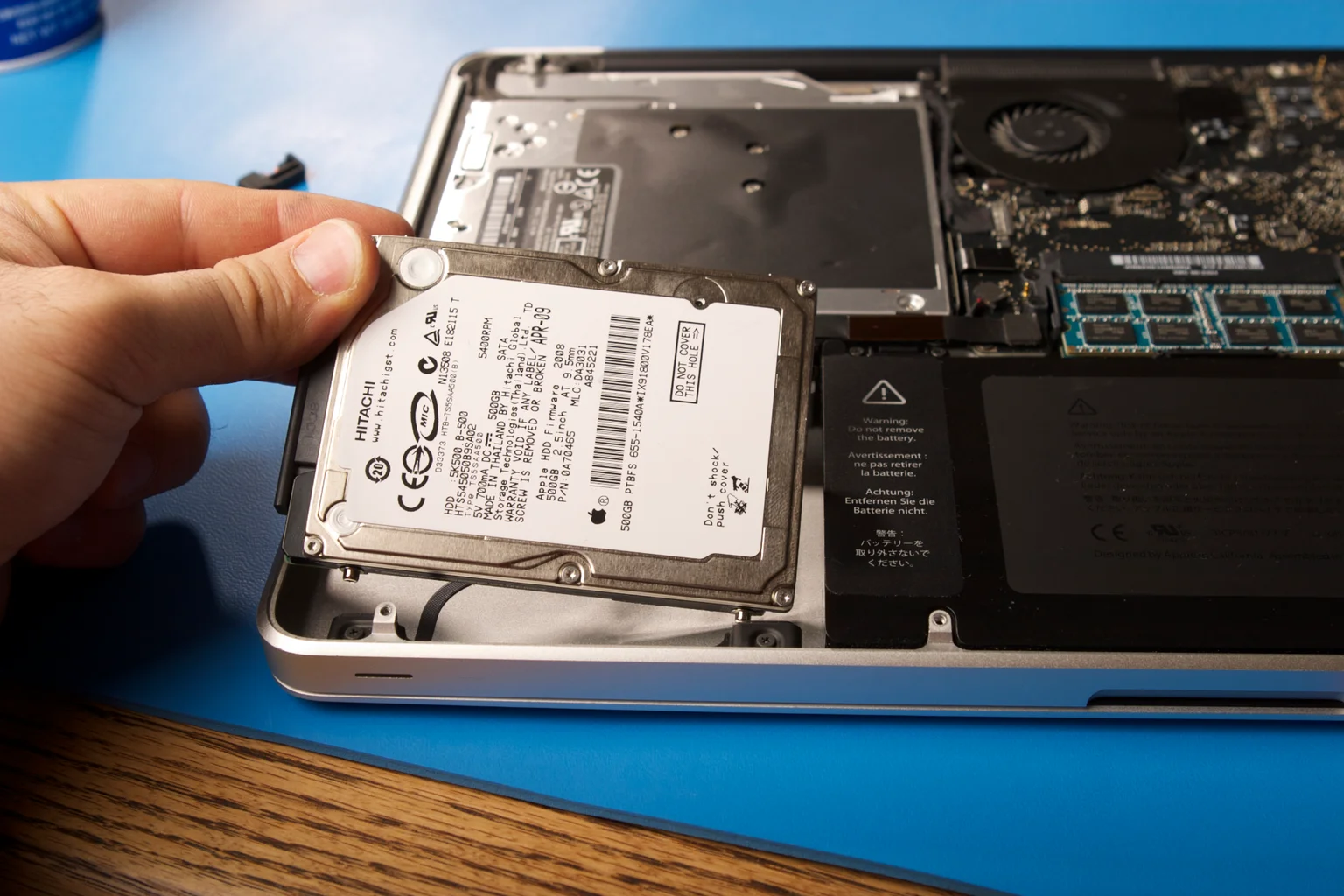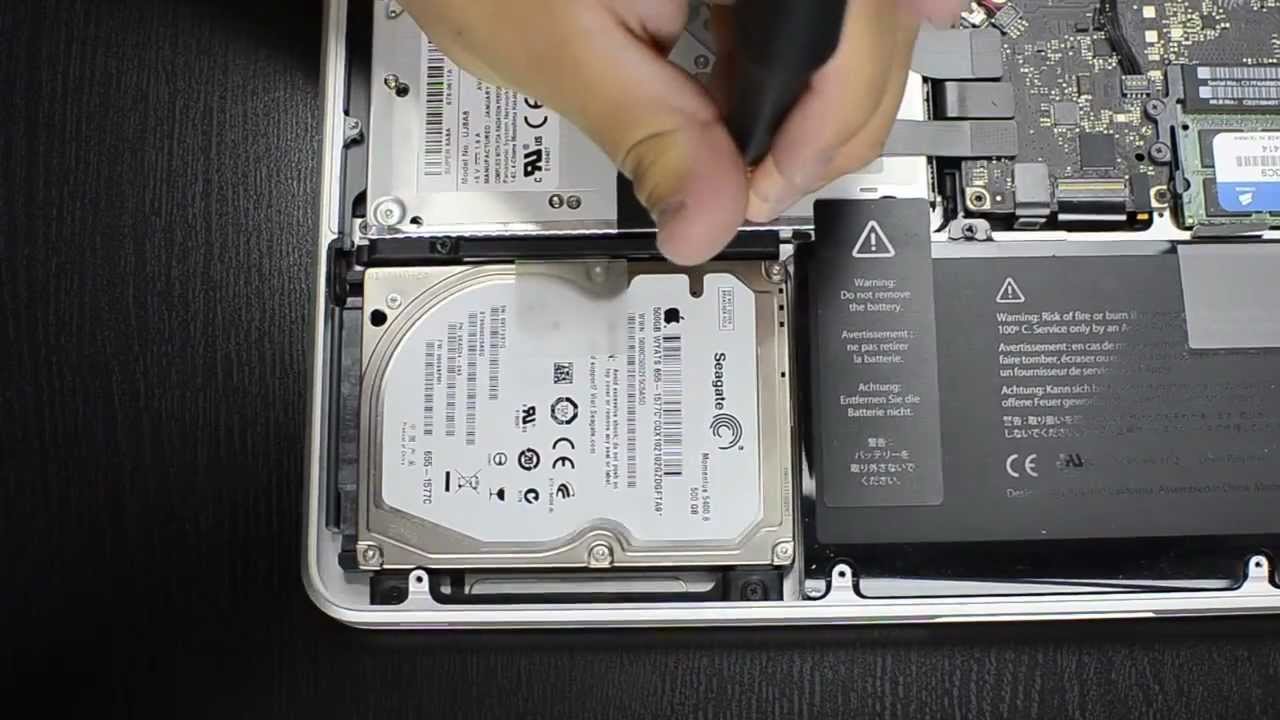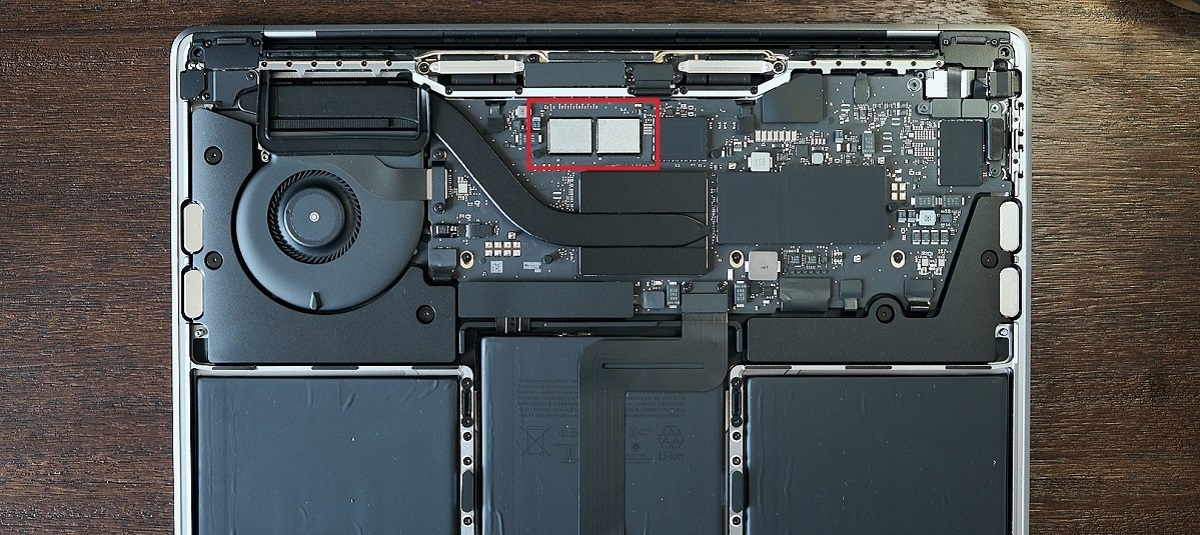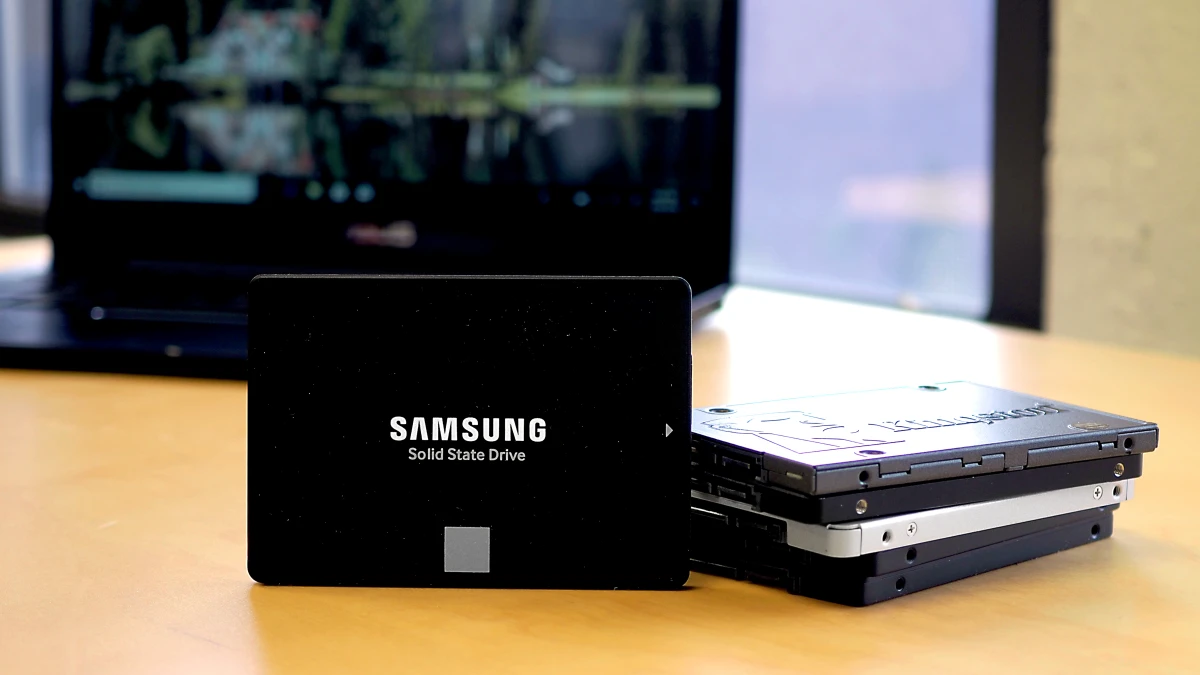Introduction
Welcome to the world of Macbook Pro, the sleek and powerful device that has become a go-to choice for users in various domains. When it comes to purchasing a Macbook Pro, one of the crucial considerations is the amount of solid-state drive (SSD) storage it comes with. While the base models provide a decent starting point, it’s essential to understand your specific storage needs to ensure a seamless computing experience.
Determining the right amount of SSD storage for your Macbook Pro depends on several factors. How you use your device, the type of files you work with, and your future requirements all play a role in making an informed decision. In this article, we will explore the different factors you should consider to determine the optimal SSD storage for your Macbook Pro and recommend suitable storage options based on user types.
Whether you’re a casual user who mainly browses the web and uses productivity apps or a creative professional working with large media files, having the right amount of SSD storage can significantly impact your overall experience. It not only allows you to store and access files seamlessly but also contributes to faster system performance and improved multitasking capabilities.
In the following sections, we will discuss the recommended SSD storage for various user types, the benefits of having more SSD storage, the pros and cons of onboard storage versus external options, and some tips on effectively managing your SSD storage. By the end of this article, you will be equipped with the knowledge to determine exactly how much SSD storage you need for your Macbook Pro.
Factors to Consider When Determining SSD Storage Needs
Determining the right amount of SSD storage for your Macbook Pro requires careful consideration of several factors. Let’s take a closer look at the key factors that can help you make an informed decision:
1. Usage: Assess how you will be using your Macbook Pro. If you primarily use it for basic tasks like web browsing, email, and word processing, you may not need a substantial amount of SSD storage. However, if you frequently work with large files, such as high-resolution images or videos, or if you use resource-intensive applications like video editing software or virtual machines, you will require a more significant amount of storage to accommodate these files.
2. File Types: Consider the types of files you regularly work with. Certain file types, such as media files (videos, audio recordings), design files (Photoshop, Illustrator), and virtual machine images, can take up a considerable amount of storage space. If your work involves these types of files, it’s wise to opt for a higher SSD storage capacity.
3. Growth Potential: Consider your future needs. Will your storage requirements increase over time? If you anticipate future growth, such as acquiring new clients, expanding your creative projects, or delving into new hobbies, it’s best to invest in a larger SSD storage capacity. This will save you from the hassle of upgrading or constantly managing limited storage space.
4. Budget: Determine your budget for buying a Macbook Pro. Larger SSD storage capacities come at a higher cost. It’s essential to strike a balance between your storage needs and the price range that fits your budget. Consider the trade-off between storage capacity and other features you prioritize in your Macbook Pro purchase.
5. Cloud Storage and External Drives: Take into account the availability of external storage options and cloud storage services. If you have access to reliable high-speed internet and prefer storing certain files in the cloud or use external drives, you may be able to get by with a lower SSD storage capacity. However, keep in mind that relying solely on cloud storage may limit your ability to access files offline and could be subject to subscription costs or data transfer limitations.
By carefully considering these factors, you can determine the right amount of SSD storage that will meet your needs and provide a smooth and efficient computing experience. With this knowledge in mind, let’s explore the recommended SSD storage options for different types of users in the next section.
Recommended SSD Storage for Different Types of Users
Not all users have the same SSD storage needs. Whether you’re a casual user, a student, a creative professional, or a gamer, the recommended SSD storage capacity will vary based on your specific requirements. Here are the recommended storage options for different user types:
1. Casual Users: If you mainly use your Macbook Pro for everyday tasks like web browsing, email, document editing, and streaming media, a base model with 128GB or 256GB of SSD storage should suffice. These capacities provide ample space for your OS, apps, and personal files like documents and photos.
2. Students: For students who perform regular academic tasks, such as researching, writing papers, creating presentations, and storing educational materials, a Macbook Pro with 256GB or 512GB of SSD storage is recommended. This capacity allows for the storage of course material, textbooks, projects, and multimedia files without worrying about running out of space.
3. Creative Professionals: If you work with resource-intensive applications like video editing software, graphic design tools, or 3D modeling software, it’s best to opt for a Macbook Pro with at least 512GB or 1TB of SSD storage. These capacities provide enough space to store large project files, media assets, and creative resources, enabling smooth workflow and minimizing the need for external storage solutions.
4. Gamers: Gamers who enjoy playing graphic-intensive games typically require a Macbook Pro with higher storage capacities. With modern games taking up several gigabytes of storage space, it’s advisable to choose a model with 1TB or higher SSD storage. This ensures you have enough space to install and store your games without constantly having to uninstall or transfer files to external drives.
Remember, these are general recommendations, and your specific needs may vary. If you’re unsure about your storage requirements, aim for a higher capacity to future-proof your investment. It’s better to have extra storage than to run out of space when you need it most.
In the next section, we will explore the benefits of having more SSD storage and why it’s advantageous to choose a Macbook Pro with a larger storage capacity.
Casual Users
Casual users typically use their Macbook Pro for everyday tasks like web browsing, email, document editing, and media streaming. They may not have extensive storage requirements for large files or resource-intensive applications. For casual users, a base model with 128GB or 256GB of SSD storage is generally sufficient.
With 128GB of storage, casual users will have enough space to install and store the operating system, essential applications, and personal files like documents, photos, and music. This capacity allows for a smooth computing experience without worrying about running out of space.
However, it’s important to note that the actual usable storage may be slightly less than the specified capacity due to system files and pre-installed applications. For users who anticipate storing a larger number of files or want to keep their Macbook Pro long-term without worrying about constantly managing storage space, opting for a model with 256GB of storage is recommended.
The additional storage capacity ensures that you have more flexibility to install applications, save photos and videos, and store other personal files without being restricted by limited space. It also allows for a longer lifespan of the device as software updates and new applications may require more space over time.
For casual users who rely heavily on cloud storage services or external drives, a smaller SSD storage capacity may suffice. If you frequently use services like iCloud, Dropbox, or Google Drive to store and access your files, or if you prefer to keep large media files on external drives, a Macbook Pro with 128GB of storage can still provide a smooth user experience.
Ultimately, the choice of SSD storage capacity for casual users depends on personal preferences and usage habits. While 128GB is generally sufficient for basic tasks, the extra storage space offered by a 256GB model provides peace of mind and ensures that your Macbook Pro can accommodate your evolving needs as you use it over time.
Now that we’ve discussed the recommended storage for casual users, let’s explore the storage options for students in the next section.
Students
As a student, your Macbook Pro is not only a tool for learning but also a hub for storing and organizing academic materials. Whether you’re researching, writing papers, creating presentations, or collaborating on group projects, having sufficient storage is essential. For students, a Macbook Pro with 256GB or 512GB of SSD storage is recommended.
A 256GB storage capacity allows you to store course materials, textbooks, lecture notes, and personal documents without worrying about running out of space. It provides sufficient room for productivity apps, reference materials, and multimedia files, such as educational videos and images. This capacity is suitable for most students and ensures a smooth academic experience throughout their studies.
However, if your field of study involves working with larger files, such as high-resolution images, complex design files, or video editing projects, opting for a Macbook Pro with 512GB of storage is advisable. This expanded storage capacity gives you ample room to work with resource-intensive applications, comfortably store your projects, and keep all your academic files in one place.
By having more storage, you can avoid the need to constantly manage your files or rely heavily on external storage solutions. It allows you to access your materials easily, even when you’re offline, ensuring uninterrupted study sessions and a streamlined workflow.
Furthermore, as a student, you may also accumulate a variety of personal files like photos, music, and social media content. Having additional storage capacity gives you the freedom to store and manage these files on your Macbook Pro without sacrificing performance or worrying about limited space.
While cloud storage options are available and can supplement your storage needs, having sufficient onboard storage offers convenience and eliminates potential reliance on internet connectivity and subscription costs.
Choosing a Macbook Pro with 256GB or 512GB of SSD storage provides students with the necessary space to store academic materials, personal files, and future projects. It offers a balance between storage needs and budget considerations, ensuring you have a reliable and capable device throughout your academic journey.
Now that we’ve discussed the storage options for students, let’s move on to the recommended storage for creative professionals in the next section.
Creative Professionals
For creative professionals who work with resource-intensive applications like video editing software, graphic design tools, or 3D modeling software, having ample SSD storage is crucial to their workflow. When it comes to storage, creative professionals should consider a Macbook Pro with at least 512GB or 1TB of SSD storage.
A Macbook Pro with 512GB of storage offers a balance between capacity and affordability for most creative professionals. It provides enough space to store large project files, media assets, and creative resources without constantly worrying about running out of storage. With this capacity, you can comfortably work on multiple projects, experiment with different versions, and have the flexibility to store your work-in-progress files along with the final deliverables.
However, if you work extensively with high-resolution videos, large RAW image files, complex design projects, or 3D models, a Macbook Pro with 1TB of SSD storage might be a more suitable choice. The extra storage capacity allows for the seamless handling of large files, reducing the need to constantly offload or transfer data to external drives. It ensures that you can have all your work and creative assets readily accessible on your Macbook Pro, even when you’re on the go.
With a larger storage capacity, you can also take advantage of software features that require temporary storage or caching, such as rendering or previewing effects in video editing software. This enables smooth performance and reduces the risk of running into storage-related bottlenecks that can slow down your creative workflow.
Additionally, creative professionals often accumulate a vast library of fonts, brushes, stock images, and other digital assets that are essential for their work. The extra storage capacity provides ample room to store and organize these assets, ensuring quick access and efficient content creation.
While cloud storage options and external drives can supplement your storage needs, on-board storage offers the most seamless experience and eliminates reliance on an internet connection or external devices.
By choosing a Macbook Pro with 512GB or 1TB of SSD storage, creative professionals can ensure that their storage needs are met, enabling efficient and uncompromised creativity. Having enough space to work with large files and creative assets not only enhances productivity but also allows for greater flexibility and the ability to take on more demanding projects.
Now that we’ve explored the storage options for creative professionals, let’s move on to the recommended storage for gamers in the next section.
Gamers
For gamers who enjoy playing graphic-intensive games on their Macbook Pro, storage capacity is an important consideration. Games nowadays can require a significant amount of storage space, especially with high-resolution textures and complex game worlds. When it comes to gaming, it is recommended for gamers to opt for a Macbook Pro with a storage capacity of 1TB or higher.
A Macbook Pro with 1TB of SSD storage provides ample space for installing and storing a wide range of games without worrying about constantly managing storage or uninstalling games to make room for new ones. This capacity allows gamers to have their favorite games readily available, providing a seamless gaming experience with faster load times and smoother gameplay.
Furthermore, having a larger storage capacity also accommodates future game releases and updates, as games continue to grow in size. With gaming patches, DLCs, and content updates becoming more common, a higher storage capacity ensures that gamers can stay up-to-date without constantly juggling game installations.
Another factor to consider is the ability to have multiple games installed simultaneously. Gamers often like to have a variety of games to choose from, whether it’s a multiplayer shooter, an immersive open-world RPG, or a strategy game. With a larger storage capacity, gamers can keep their game library accessible and easily switch between different titles and genres.
Additionally, having ample storage allows for the option to record gameplay footage or capture screenshots without worrying about space constraints. Game recordings and media files can quickly accumulate, especially if you intend to create content or share highlights with others.
While external hard drives are an option to expand storage, having a larger onboard storage capacity ensures convenience and eliminates the need to carry around additional devices. It also minimizes the risk of data loss or accidental damage to external drives.
By choosing a Macbook Pro with 1TB or higher of SSD storage, gamers can enjoy a vast gaming library with the freedom to install and explore a variety of games without concerns about storage limitations. It provides the necessary space to immerse oneself in the gaming world and fully enjoy the gaming experience that Macbook Pro has to offer.
Now that we’ve discussed the storage options for gamers, let’s explore the benefits of having more SSD storage in the next section.
Benefits of Having More SSD Storage
Having more SSD storage in your Macbook Pro offers several benefits that enhance your overall computing experience. Here are some of the advantages of opting for a larger storage capacity:
1. Flexibility and Convenience: With more storage space, you have the flexibility to install and store a larger number of applications, files, and media. This eliminates the need to constantly manage your storage or delete files to make room for new ones, providing convenience and a smoother workflow.
2. Improved Performance: A larger SSD storage capacity allows for improved system performance. With ample space, your Macbook Pro can allocate storage resources more efficiently, reducing the strain on the SSD and optimizing read and write speeds. This results in faster boot times, quicker application launches, and a more responsive overall computing experience.
3. Seamless Multitasking: With more storage, you can run multiple applications simultaneously without experiencing performance issues. This is particularly beneficial for users who work on resource-intensive tasks or have a habit of multitasking, allowing for smoother transitions between applications and increased productivity.
4. Future-proofing: Choosing a Macbook Pro with more SSD storage capacity ensures that your device can accommodate future needs and requirements. Software updates, increasing file sizes, and evolving usage patterns can quickly consume storage space. Having extra storage helps future-proof your investment, reducing the need for upgrading in the near term.
5. Store More Media Files: If you work with large media files, such as high-resolution photos, videos, or audio recordings, having more storage capacity allows you to store and organize your media library effortlessly. This provides easy access to your creative assets and allows for smooth editing or sharing of media files.
6. Offline Access: Having more onboard storage means you can store important files locally for offline access. This is particularly useful when traveling or in situations where you may not have access to reliable internet connectivity. It ensures that your critical files are readily available, regardless of your online status.
7. Reduced Reliance on External Storage: A larger SSD storage capacity minimizes the need to rely heavily on external drives or cloud storage solutions. Storing files locally offers convenience, eliminates potential internet connectivity issues, and provides faster access to files without relying on external devices.
By investing in more SSD storage, you not only have the freedom to store and access a wider range of files but also future-proof your Macbook Pro for upcoming software requirements and evolving storage needs. With the benefits of flexibility, improved performance, and seamless multitasking, you can optimize your productivity and enjoy a more efficient computing experience.
Next, let’s explore the difference between onboard storage and external storage options.
Onboard Storage vs External Storage Options
When it comes to expanding your storage capacity, you have the option to choose between onboard storage and external storage solutions. Let’s explore the differences between these two options:
1. Onboard Storage: Onboard storage refers to the SSD storage that is built into your Macbook Pro. It offers several advantages, including:
- Convenience: Onboard storage provides a seamless and integrated experience. Your files and applications are readily accessible without the need for additional devices or external connections.
- Performance: Onboard storage generally offers faster read and write speeds compared to external storage options. This results in quicker file transfers, application launches, and overall system responsiveness.
- Portability: With onboard storage, you can take your files and applications with you wherever you go. There’s no need to carry around external drives or worry about connection issues.
- Data Security: Onboard storage keeps your files and data within the physical confines of your Macbook Pro. This provides a certain level of security since it limits the exposure of your data to external threats.
2. External Storage Options: External storage refers to devices like USB flash drives, external hard drives, or network-attached storage (NAS) devices that can be connected to your Macbook Pro. Some benefits of using external storage solutions include:
- Expandable Capacity: External storage allows you to easily expand your storage capacity by connecting additional devices. This is particularly useful if you need a large amount of storage space or want to keep specific files separate from your onboard storage.
- Backup and Redundancy: External storage provides an additional layer of backup and redundancy for your important files. You can regularly backup your data to an external drive to protect against data loss or create redundant copies for increased data integrity.
- Sharing and Collaboration: External storage can be easily shared with others or used for collaborative work. With network-attached storage (NAS) devices, multiple users can access and share files simultaneously, making it ideal for team projects or shared resources.
- Cost-Effectiveness: External storage options can be more cost-effective when compared to upgrading the onboard storage of your Macbook Pro. You can choose storage capacities based on your specific needs, allowing for more flexibility in terms of cost and storage allocation.
The choice between onboard storage and external storage options ultimately depends on your specific requirements and preferences. While onboard storage offers convenience, performance, and portability, external storage provides expandable capacity, backup options, and cost-effectiveness.
It’s often advantageous to have a combination of both onboard storage and external storage solutions. This allows you to leverage the benefits of each option and tailor your storage setup to suit your needs. For example, you can use onboard storage for frequently accessed files and applications, while utilizing external storage for backup, archiving, or storing less frequently accessed files.
Now that we’ve explored the differences between onboard storage and external storage options, let’s discuss some tips on managing your SSD storage effectively.
Tips on Managing SSD Storage Effectively
Effectively managing your SSD storage is crucial to ensure optimal performance and productivity on your Macbook Pro. Here are some tips to help you efficiently manage your storage space:
- Regularly Clean Up Unnecessary Files: Take the time to review and delete files that are no longer needed. This includes duplicates, temporary files, and old downloads. Utilize the built-in storage optimization tools on your Macbook Pro, such as the Storage Management feature, to identify and remove large or unnecessary files.
- Offload Unused Applications: If you have applications that you rarely use, consider uninstalling them to free up storage space. Reinstalling them later is easy, thanks to the Mac App Store or other reliable sources.
- Stream and Store Media Files Online: Consider utilizing cloud storage services for storing large media files like photos, videos, or music. Services like iCloud, Dropbox, or Google Drive offer the flexibility to store files online while easily accessing them when needed.
- External Storage for Archiving: Use external hard drives or NAS devices to archive older files, completed projects, or files that are rarely accessed. This frees up valuable onboard storage while still keeping your files accessible when required.
- Optimize Download Locations: Set your download location for large files, such as movies or software installers, to an external drive to prevent them from taking up valuable onboard storage. This can be adjusted within your browser settings or specific applications.
- Use Storage Management Tools: Take advantage of third-party storage management tools or utilities designed specifically for Mac users. These tools can help you analyze storage usage, clear cache files, and identify large or redundant files that can be safely deleted.
- Invest in a Larger SSD: If you frequently find yourself struggling with limited storage space, consider upgrading to a Macbook Pro with a larger SSD capacity when possible. Upgrading your storage ensures you have ample space to meet your growing needs without constantly worrying about storage management.
- Regularly Back Up Important Files: Whether you use Time Machine or other backup solutions, regularly backing up your files ensures that you have a copy in case of data loss or hardware failure. It also provides peace of mind when dealing with large amounts of data.
By following these effective management tips, you can optimize your SSD storage and maintain peak performance on your Macbook Pro. With proper storage management, you’ll have more space for your important files and applications, and reduce the risk of performance degradation due to limited storage capacity.
Now that we’ve explored tips for managing your SSD storage, let’s summarize the key points discussed in this article.
Conclusion
Choosing the right amount of SSD storage for your Macbook Pro is essential to ensure a smooth and efficient computing experience. Factors such as your usage type, file types, growth potential, and budget should all be considered when determining your storage needs.
For casual users, a Macbook Pro with 128GB or 256GB of SSD storage is generally sufficient for basic tasks and everyday use. Students, on the other hand, benefit from a Macbook Pro with 256GB or 512GB of storage to accommodate academic materials and multimedia files.
Creative professionals working with resource-intensive applications should consider a Macbook Pro with at least 512GB or 1TB of storage to store large project files and creative assets. Gamers, who require ample space for their game library, should opt for a Macbook Pro with a storage capacity of 1TB or higher.
Having more SSD storage offers several benefits, including flexibility, improved performance, seamless multitasking, and the ability to store more media files. It also reduces reliance on external storage solutions and provides room for future growth.
When it comes to expanding your storage options, onboard storage offers convenience, performance, and portability, while external storage options provide expandable capacity, backup options, and cost-effectiveness. It’s often beneficial to have a combination of both options for a comprehensive storage solution.
To manage your SSD storage effectively, regularly clean up unnecessary files, offload unused applications, utilize cloud storage for media files, and consider external storage for archiving. Optimizing download locations and investing in a larger SSD are also viable strategies.
By considering your specific needs and following these tips, you can ensure that your Macbook Pro’s SSD storage meets your requirements and enhances your overall computing experience.
Remember, the recommended storage capacities mentioned in this article are general guidelines. Your unique needs and usage patterns may vary, so it’s crucial to assess your specific requirements and choose the storage capacity that best suits your needs.
Now that you have a better understanding of how much SSD storage you need for your Macbook Pro, you can make an informed decision when purchasing or upgrading your device.










